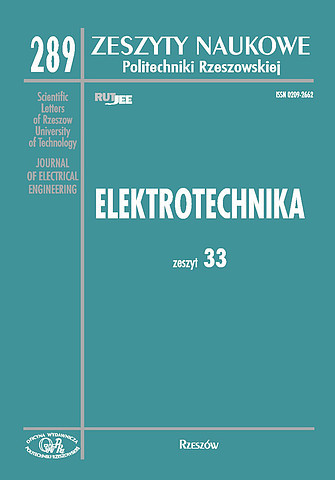Abstract
The new method of the estimation of precision of the condition number of determinant matrix (CNDM) calculation is worked out. The determinants are used by linear circuits’ analysis with the node method. The estimation of precision is based on the calculus of probability using MonteCarlo method. Random change of matrix elements leads to a dispersion value of its determinant. Greater dispersion of determinant means that the matrix is more difficult for the calculations. The new formula for the calculation of condition number of matrix using the product of values of the every entry of the matrix A on its minor was developed. Obtained values of condition number are more accurate comparing to classic values. The accuracy of the new formula was proven with the Monte-Carlo method. The convenience of the usage as value of inaccuracy the number of lost (inaccurate) digits of mantissa versa condition number matrix was shown as added benefit. Monte-Carlo calculations to determine the required precision matrix determinant is relatively complicated and lengthy process. Therefore author proposed a new formula for the calculation of the condition number of the matrix determinant (CNMD) without the Monte-Carlo calculus. The method of the control of precision of calculation on the basis of analysis of subtraction is worked out. A new method for improving the precision of the calculation of the determinant of a matrix is proposed. The Hilbert matrices are canonical examples of ill-conditioned matrices, making them notoriously difficult to use in numerical computation and of the determinant calculation.
References
[2] Bolkowski S.: Obwody elektryczne, WNT, Warszawa, 2000.
[3] Osowski I., Szabatin J.: Podstawy teorii obwodów, WNT, Warszawa, 2000.
[4] Dorf R.: Introduction to Electric Circuits, Jon Wiley & Sons, New York, 1989.
[5] Dmytryszyn R., Rusin I, Rzepka K, „Wielomianowa redukcja obwodów”, XXII Seminarium z podstaw elektrotechniki i teorii obwodów SPETO-99, Politechnika Śląska, Gliwice, pp. 487-490, 1999.
[6] Sigorski W., Petrenko A.: Podstawy teorii obwodow elektronicznych, “Wyzsza Szkoła”, Kiev, pp. 573. 1971 (w j. rosyjskim).
[7] Bronsztejn I., Siemiendiajew K.: Matematyka. Poradnik encyklopedyczny, PWN, Warszawa, 2004.
[8] Leibniz G.: Formula_for_determinants, http://en.wikipedia.org/ wiki/Leibniz_formula_for_determinants, [dostęp 01-03-2009]
[9] Feusner W.: Über Stromverzweigung in Netzförmigen Leitern, Annalen der Physik, Leipzig, vol.9, pp.1304-1329, 1902.
[10] Dmytryszyn R.: Analiza obwodów liniowych metodą Feussnera, XXVII ICSPETO, Międzynarodowa konferencja z podstaw elektrotechniki i teorii obwodów, Politechnika Śląska, Gliwice-Ustroń, 2003, ss. 509-512.
[11] Bachvalov N.: „Numerical methods”, Nauka, Moskau, 1975. (In Russian)
[12] James Kesling J.: The Condition Number for a Matrix, www.math.ufl.edu/~kees/ConditionNumber.pdf [dostęp 01-04-2010].
[13] Gantmacher F.: Theory of matrices, AMS Chelsea publishing., 1959.
[14] Dmytryshyn R.: Modification of Gauss Method, Proc. of the Conference “Problems of physical and biomedical electronic”, Kiev, pp. 156-159, 1996 (in Ukrainian).
[15] Dmytryshyn R.: Modified Feussner’s method,.7th International Workshop on
Symbolic Methods and Applications in Circuit Design, SMACD-2002, Rumunia, Sinaia, pp. 47-52, 2002.
[16] Dmytryszyn R.: The Improvement of the Gauss Method Accuracy, Proc. Of CMS’09 Computer Methods and Systems, Krakow, ISSN 83-916420-5-4, pp. 419-424, 2009. [dostęp 10-01-2010].





